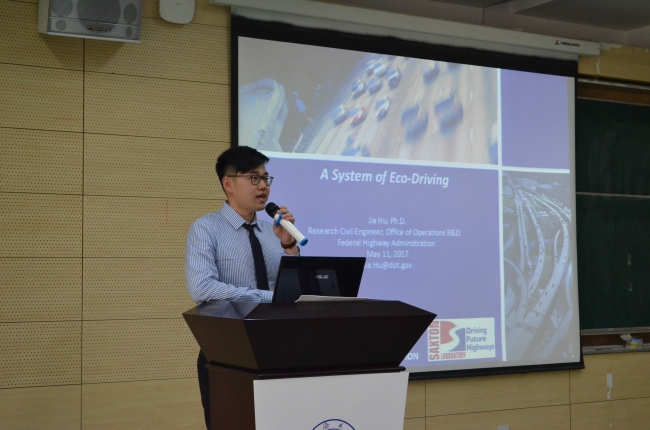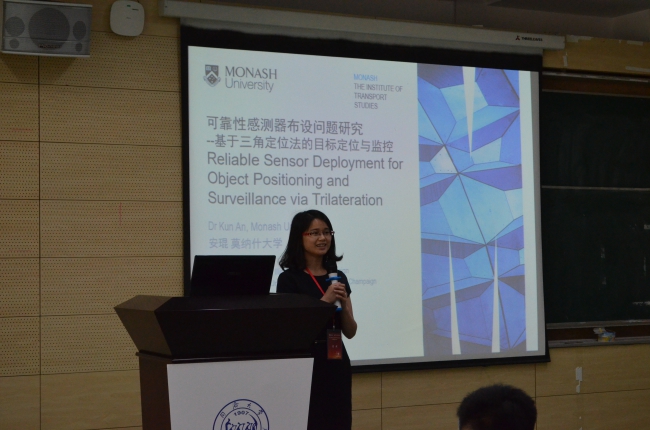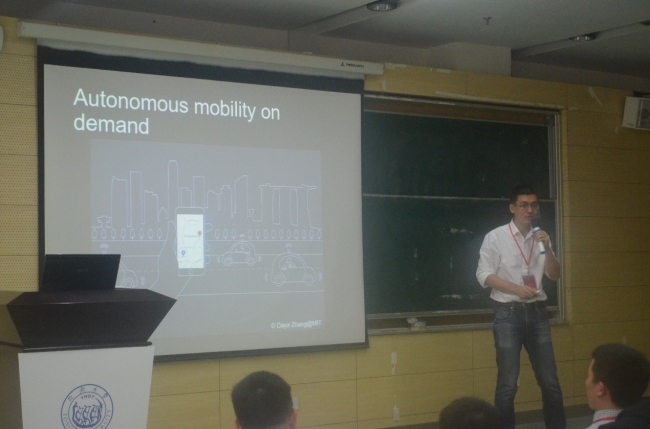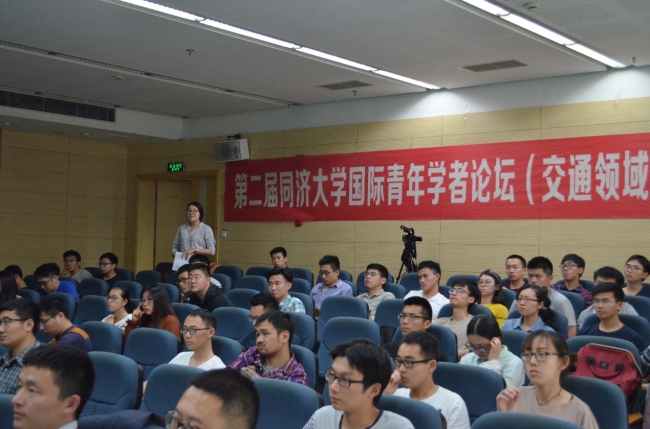2017年5月11日(星期四)下午13:30,第288期同路人学术论坛在通达馆103室顺利举行。本次论坛由胡笳博士主持,邀请来了胡笳博士、安琨博士、沈煜博士三位优秀青年学者,为大家带来主题为“New Technologies in Transportation”的讲座。
(1) A System of Eco-Driving Technologies

Jia Hu works as a research associate at the Federal Highway Administration (FHWA). He graduated with a Ph.D. degree from the University of Virginia. He is an Associate Editor of the American Society of Civil Engineers Journal of Transportation Engineering and an editorial board member of the International Journal of Transportation. His research interests include connected and automated vehicles, microscopic simulation model application, system optimization, and transportation energy efficiency.
Eco-driving is one of the many techniques that have been developed to improve vehicles’ fuel efficiency. It is, in nature, a vehicle controller taking advantage of Connected Vehicle (CV) data–which includes but not limited to traffic state, signal timing, and terrain information–to have vehicles cooperate better with present and future conditions. In this presentation, a system of eco-driving technologies was demonstrated. It includes eco-drive for a hybrid vehicle on rolling terrains, eco-drive for a regular passenger vehicle on rolling terrains, eco-approach to an isolated signalized intersection under partially connected automated environment, eco-drive field test and some other on-going studies.
(2) Reliable Sensor Location for Object Positioning and Surveillance via Trilateration

Kun received a Ph.D. degree in Civil Engineering from the Hong Kong University of Science and Technology, Hong Kong in 2014. She is currently a Lecturer with the Transport group at Monash University. The focus of her PhD dissertation was on reliable transit network design considering demand uncertainty. After graduation, she joined the University of Illinois at Urbana & Champaign as a Postdoctoral researcher in 2015.Her research interests include reliable transit network design with stochastic demand, logistics management, supply chain network design and traffic operation and control.
Object positioning and surveillance has been playing an important role in various indoor location-aware applications. Signal attenuation or blockage often requires multiple local sensors to be used jointly to provide coverage and determine object locations via mobile devices. The deployment of sensors has a significant impact on the accuracy of positioning and effectiveness of surveillance. In this paper, we develop a reliable sensor location model that aims at optimizing the location of sensors so as to maximize the accuracy of object positioning/surveillance under the risk of possible sensor disruptions. We formulate the problem as a mixed-integer linear program and develop solution approaches based on a customized Lagrangian relaxation algorithm with an embedded approximation subroutine. A series of hypothetical examples and a real-world Wi-Fi access point design problem for Chicago O'Hare Airport Terminal 5 are used to demonstrate the applicability of the model and solution algorithms. Managerial insights are also presented.
(3) Integrating shared autonomous vehicle in public transit system: An example of the first-mile problem

Dr. Yu Shen is a postdoctoral researcher at Future Urban Mobility (FM) IRG of Singapore-MIT Alliance for Research and Technology (SMART) Centre, Singapore. He works with Prof. Jinhua Zhao from MIT on FM Phase 2 project: Mobility Management. Prior to working in Singapore, he received his PhD degree from MIT-Portugal Program (University of Lisbon and MIT), with the top grades of Pass with Distinction and Honor. His PhD dissertation, entitled “the impacts of high speed rail on urban configurations,” consists of 6 journal publications. His research interests cover individual-based simulation, spatial discrete choice modelling, land-use transportation interaction (LUTI) models, public transportation, transport economics and policies, etc. He also holds a Bachelor’s degree in Systems Science and Engineering from Zhejiang University in Hangzhou, China and a Master’s degree in Transport Systems from KTH Royal Institute of Technology in Stockholm, Sweden.
This work proposes a framework incorporating the interaction among and the attributes of the potential stakeholders in an autonomous vehicle (AV) and public transit integrated system. Based on the worldwide experiences on private-hire car firm regulation and public transit organizational structures, six possible integration models based on the relationships between AV operator and public authority, and between AV operator and conventional transit operator are envisioned. In light of the real-world transit organizational structure in Singapore, we present a transit smart data-driven method to investigate the impacts of this AV-integrated model on public transit system, with a special focus on the first-mile problem during morning peak hours. We propose the integration of shared AVs as an alternative on low-demand bus routes, while the substituted bus routes are also repurposed. An agent-based simulation model was built to assess the performance of the new integrated service with three types of agents—the passenger, the AV, and the bus. 52 scenarios with various fleet sizes and ridesharing preferences were simulated. The results show that if the AV users agree to share their rides with other passengers, the AV and public transit integrated system would be able to 1) enhance the service quality, 2) occupy less road resources, 3) be financially sustainable, and 4) potentially utilize bus service more efficiently.

在每一部分介绍后,留有5分钟时间给与会师生交流讨论,通过对交通领域新技术、新方法的探讨与交流,每个人均获益匪浅。